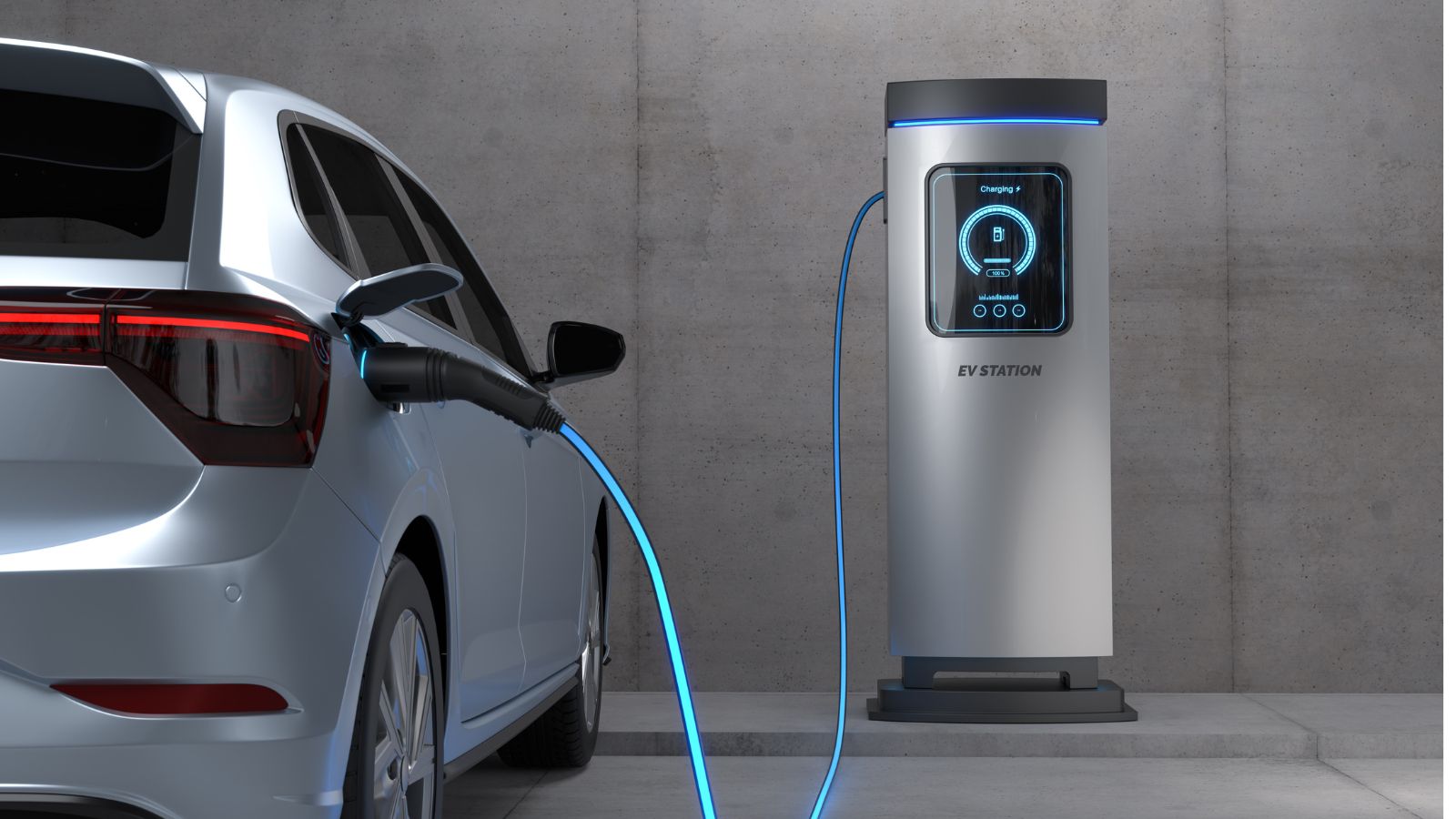Mapping India’s EV Infrastructure Growth with Location Intelligence
India’s electric vehicle (EV) ecosystem is witnessing rapid growth, fueled by government initiatives such as the Faster Adoption and Manufacturing of Electric Vehicles (FAME II) scheme and the National Electric Mobility Mission. While adoption of EVs is accelerating, one of the critical factors shaping this transition is the availability of a robust and accessible charging infrastructure. Ensuring that charging stations are optimally located to serve growing demand is essential to support the shift to clean mobility.
Geospatial technology and location intelligence have emerged as powerful tools in planning and scaling India’s EV infrastructure. By combining satellite imagery, GIS mapping, AI-driven routing, and spatial network analysis, policymakers and operators can make data-driven decisions, ensuring equitable access, efficient operations, and a sustainable roll-out of EV charging networks across urban and semi-urban areas.
The Role of Geospatial Tools in EV Infrastructure
Planning an EV charging network is a complex challenge. Charging stations need to balance coverage, accessibility, and utilization efficiency. Traditional approaches relying on road proximity or vehicle density alone often lead to sub-optimal infrastructure, leaving some areas underserved while others face congestion at chargers.
Geospatial tools address these challenges by integrating multiple datasets—traffic patterns, population density, land use, power grid availability, and travel behavior—into a spatially informed planning framework. Platforms such as Bhuvan Maps, India’s national geospatial platform, enable planners to visualize potential charging sites across cities and highways. When combined with AI-based routing and spatial network analysis, these tools allow authorities to identify locations that maximize accessibility while minimizing costs and travel inconvenience for EV users.
By mapping travel corridors and analyzing commuting patterns, geospatial analysis can predict areas of high demand and locate charging infrastructure accordingly. This ensures that EV drivers can access charging points conveniently, promoting confidence in adopting electric mobility.
Applications in State EV Policies
Several Indian states have started incorporating GIS and geospatial analysis into their EV policies to create equitable and efficient networks.
In Delhi, authorities have leveraged geospatial planning to distribute public charging stations across the city, considering vehicle density, traffic corridors, and proximity to residential and commercial areas. This spatial approach ensures that EV users in high-demand zones have convenient access while preventing oversaturation in certain neighborhoods.
Maharashtra has similarly used GIS to support its state EV policy, planning both urban and highway charging networks. By overlaying population density, major transport corridors, and existing electricity infrastructure, planners have been able to design a network that balances coverage, capacity, and operational efficiency. This state-level geospatial planning allows governments to make data-backed decisions regarding public-private partnerships, subsidy allocations, and incentive mechanisms for charging station operators.
Case Study: EESL’s Pan-India EV Infrastructure Planning
The Energy Efficiency Services Limited (EESL) has been at the forefront of India’s national EV infrastructure roll-out. Using GIS-based planning, EESL has mapped the country’s EV corridors and urban centers, integrating spatial data on road networks, power availability, and expected EV adoption rates.
By analyzing both short-range urban commutes and long-distance travel routes, EESL’s geospatial tools have helped optimize the siting of fast chargers and standard EV stations. The platform also allows simulation of energy demand at each location, enabling efficient load management and grid integration. The use of geospatial intelligence ensures that resources are allocated strategically, avoiding redundancy while maximizing coverage across different states and transport corridors.
This approach has allowed EESL to collaborate with private charging operators, local utilities, and state transport authorities, creating a coordinated framework for EV infrastructure that aligns with national policy objectives.
Challenges in EV Infrastructure Planning
Despite the advances offered by geospatial tools, several challenges remain in scaling EV infrastructure effectively:
Data Availability: Comprehensive data from private charging operators is often fragmented or restricted, creating gaps in planning and forecasting demand accurately.
Energy Demand Mapping: Predicting future energy requirements at charging stations requires detailed modeling of EV adoption rates, usage patterns, and vehicle types, which can be dynamic and uncertain.
Inter-Agency Coordination: EV infrastructure planning involves multiple stakeholders, including state transport departments, power utilities, municipal authorities, and private operators. Integrating spatial data and planning frameworks across agencies can be challenging, requiring standardization and consistent communication.
Balancing Coverage and Utilization: Installing chargers uniformly does not guarantee optimal usage. Some locations may remain underutilized while others become congested. Geospatial analytics helps mitigate this, but careful calibration of demand models and continuous monitoring is essential.
The Future of Geospatial Intelligence in EV Roll-Out
The use of geospatial technology in EV infrastructure planning is still evolving, and the opportunities are immense. AI-powered routing and predictive modeling can allow planners to simulate scenarios for different adoption rates, traffic patterns, and charging behavior, providing a dynamic approach to infrastructure development.
Emerging innovations include integrating EV charging networks with smart grids and renewable energy sources, where geospatial analysis ensures that stations are located in areas with optimal power availability and minimal transmission losses. This is particularly important as India seeks to decarbonize its transport sector and incorporate sustainable energy sources into EV operations.
Furthermore, as urban mobility evolves, geospatial tools can integrate multimodal transport data—combining electric two-wheelers, buses, and passenger cars—to design cohesive and equitable charging networks that serve diverse mobility needs. The combination of location intelligence, AI, and real-time data can transform EV infrastructure from a reactive system into a proactive and adaptive network, supporting India’s transition to a sustainable transport ecosystem.
Conclusion
India’s EV infrastructure growth is intrinsically linked to the effective use of geospatial and location intelligence. By leveraging tools such as Bhuvan Maps, AI-routing algorithms, and spatial network analysis, policymakers and operators can plan, optimize, and scale charging networks efficiently. State-level applications in Delhi and Maharashtra, combined with national efforts by EESL, demonstrate the practical benefits of GIS-driven planning, ensuring equitable access and operational efficiency.
While challenges around data availability, energy demand forecasting, and inter-agency integration remain, geospatial technology provides a scalable and evidence-based framework for EV infrastructure deployment. With continued investment in AI, GIS, and location intelligence, India is well-positioned to create a robust, reliable, and sustainable EV charging network that supports growing adoption and accelerates the nation’s clean mobility agenda.
Geospatial intelligence not only optimizes infrastructure planning but also empowers policymakers to respond dynamically to changing demand, ensuring that the benefits of electric mobility are accessible to citizens across cities, towns, and highways. As India progresses toward a low-carbon future, location-based planning will remain central to building an EV ecosystem that is efficient, equitable, and sustainable for all.




Leave a Comment